Alternative drive concepts: opportunities for hydraulic cylinder manufacturers
The rise of alternative drive concepts is transforming industries, offering manufacturers an exciting chance to lead the change toward cleaner, more efficient machinery. Alternative drive systems prioritize efficiency and reduced environmental impacts while paving the way for Industry 4.0 integration. For hydraulic cylinder manufacturers, these systems represent both a challenge to traditional practices and an opportunity to redefine the future of hydraulics by merging them with cutting-edge technologies.
🔍 The opportunities in alternative drive systems
The shift toward electrified and hybrid machinery is getting boost across industries such as construction, agriculture, and mining. As emissions regulations tighten and the need for sustainable solutions becomes urgent, alternative drive technologies like electric actuators, hybrid electric/diesel systems, and modular drivetrain designs are enabling equipment manufacturers to meet environmental goals without compromising performance.
Electromechanical systems, such as electric actuators, deliver unparalleled precision, energy efficiency, and seamless integration with digital ecosystems, supporting real-time monitoring, predictive maintenance, and operational efficiency. Meanwhile, electrohydraulic systems provide a powerful bridge between traditional hydraulics and electrification. By combining the high-power capabilities of hydraulics with the precision and control of advanced electronics, electrohydraulics enable heavy-duty machinery to maintain power and efficiency in demanding applications. With features like load-sensing technology and smart control integration, electrohydraulics optimize energy use and contribute to sustainability goals.
Hybrid configurations further complement this shift, blending the high-power density of hydraulics with the energy efficiency of electric systems. These solutions offer a gradual yet effective pathway toward full electrification, ensuring robust performance while reducing emissions and energy consumption.
The above-mentioned advancements are, naturally, driven by digitalization: using smart platforms to connect hydraulic and electromechanical components, improving machine reliability, minimizing downtime, and readying equipment for future demands. Together, these technologies enable manufacturers to innovate while also meeting evolving regulatory, environmental, and market demands.
⚔️ Overcoming the challenges
Naturally, alternative drive systems come with challenges, too. High power output and energy density have traditionally been the strongholds of hydraulic systems and meeting their standards with electric or hybrid alternatives requires superior engineering. The transition also requires seamless integration of hydraulic and electric systems, particularly for heavy-duty applications operating in rugged environments, such as mining, construction and forestry.
Additionally, the availability of the right kind of infrastructure, such as charging stations for electric machinery in remote work sites, remains a limiting factor. Hybrid systems offer an interim solution, allowing diesel engines to complement battery-powered components. Yet, careful design and optimization are essential to ensure operational reliability and efficiency in demanding scenarios.
Market readiness is another hurdle, especially for larger equipment where economic justification and technological feasibility need to be balanced. Manufacturers must demonstrate the long-term value of alternative drives, from reduced maintenance to compliance with environmental regulations, to ensure widespread adoption.
💎 Hydroline’s vision
At Hydroline, we view alternative drive systems not just as a challenge but as an opportunity to innovate and shape the future. By incorporating electromechanical solutions into our portfolio, we’re bridging the gap between traditional hydraulics and advanced technologies. Our solutions are designed to meet the demands of sustainability, efficiency, and precision, enabling next-generation machinery to perform at its best.
We’re thrilled to be part of Bauma 2025, where we’ll showcase our electromechanic actuator, a cutting-edge example of how hydraulics and electromechanics can work together to power the future. Visit our stand to explore how Hydroline is leading the way in developing solutions that drive sustainability and innovation forward.
In need for more information about hydraulics? How about one of these articles from us?
Hydraulic cylinders in agriculture and maintenance
20.11.2025
Every season brings new challenges to farms. Heavy soil in spring, long harvest shifts in autumn, or equipment that needs servicing in the depths of..
Read moreHydraulic cylinders in load handling
27.10.2025
From the forklift in a distribution center to the reach stacker in a busy port, hydraulic cylinders are the essential force behind the movement of..
Read moreHydroline’s ESG Commitment
29.09.2025
At Hydroline, sustainability is not just a responsibility but the foundation for our future as a trusted partner for the OEMs and a leader in..
Read moreHydraulic cylinders in mining & construction
18.09.2025
Like in every aspect of business and life, the road to achieving big things usually lies in the small decisions and tiny steps on the..
Read more

